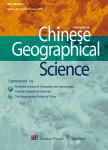Geography and Rural Household Income:A Village Level Study in Henan Province,China
Geography and Rural Household Income:A Village Level Study in Henan Province,China作者机构:Institute of Regional Sustainable Development Henan University of Finance and Economics Zhengzhou 450002 China College of Environment and Planning Henan University Kafeng 475001 China
出 版 物:《Chinese Geographical Science》 (中国地理科学(英文版))
年 卷 期:2010年第20卷第1期
页 面:1-8页
核心收录:
学科分类:02[经济学] 0401[教育学-教育学] 04[教育学] 0201[经济学-理论经济学] 020105[经济学-世界经济] 040107[教育学-成人教育学]
基 金:Under the auspices of National Natural Science Foundation of China (No.40535025) Ministry of Education Project of Key Research Institute of Humanities and Social Sciences in Universities (07JJD790124)
主 题:rural household income (RH1) geographical factor village level study Henan Province
摘 要:This study uses the data from a sample survey conducted in April 2007 on 1 251 rural households in 11 villages of Henan Province, the largest less developed agricultural province in China, to examine how geography affects rural household income (RHI). The quantitative analysis indicates following results. I) The significance of the traditional geographical factors reduces as RHI rank increases. 2) The landform does not affect the RHI significantly. The per capita income of rural household in a plain area is lower than that in a mountainous area. And 3) the capital endowment and status of non-farm economic activities contribute to the increase of RHI. But the probability and intensity of non-farm economic activities of rural households in urban outskirts villages are higher than that in non-urban outskirts villages. Based on the results, the paper further concludes that geography still plays a significant role in rural development, but it is changing over time. The agricultural resources (such as per capita arable land) significantly affect RHI with the relatively lower income level, while the geographical location shows a more significant impact on RHI with the relatively high income level. Along with economic development, the proximity replaces the traditional geographical factors such as landform and physical resources as the major determining factor in RHI.



